Genetically modified foods – or “Frankenfoods” as the tabloids rather catchily refer to them – have been a topic of heated debate since their introduction in the 1990s, but producers have been fiddling with our food for far longer than that. In the 1960s, food products were developed that used a mixture of biotechnology and canny marketing in one irresistible package, and the housewives of America couldn’t get enough. Sugary cereals promoted by cartoon characters with memorable catchphrases were a huge hit with the Baby Boomer generation for their image and flavour, and their convenience seemed manna from heaven for busy mums. Unfortunately, as the western world’s expanding waistlines now show, these products weren’t quite the boon they seemed.
American contemporary artist Rachel Lee Hovnanian wonders whether the same mistakes are being made with technology today. In Plastic Perfect, the West Virginian draws parallels between post-war advancements in food production and the lightning advance of technology as experienced by Generations X, Y and Z in the modern world, asking if we will pay a heavy price for our digital immersion in 50 years’ time. What will be the consequences to our health of all the screen time, and how will our social interactions be affected? In her exploration, Hovnanian introduces the engineered “perfect baby”, pacified with a digital screen as chaos reigns around the oblivious family. The child’s teddy bear is murdered as mice run riot in this unsettling glimpse into the future; Plastic Perfect is on display at Leila Heller Gallery‘s West 25th Street venue in New York from 4 September to 18 October.
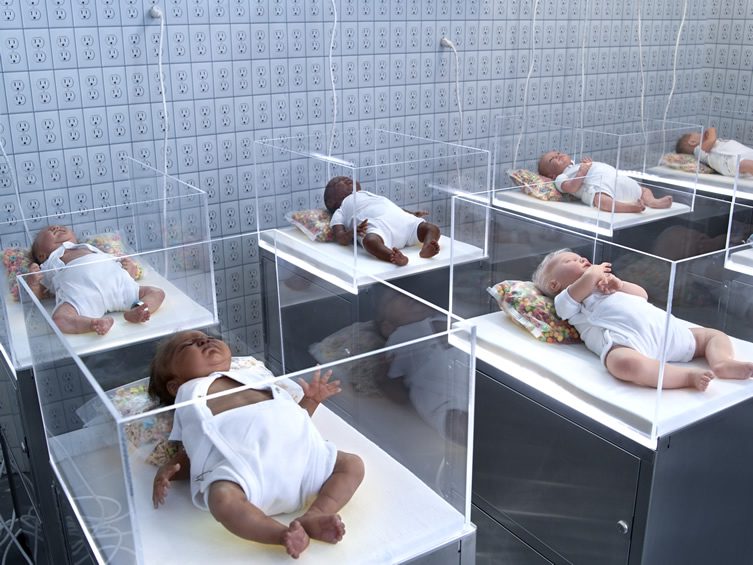
Perfect Baby Showroom, 2014,
Wallpaper, extension cords, baby dolls, metal, acrylic, wood,
neon light, foam, cotton fabric, LED lights, cereal,
Dimensions Variable, Detail view
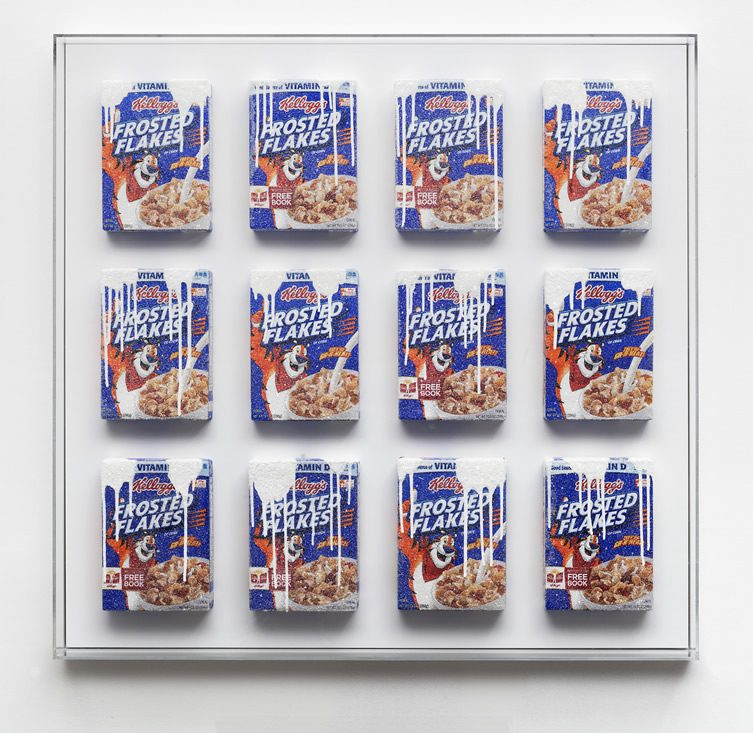
They’re Gr-r-reat, 2014,
Cereal boxes, acrylic, crushed glass, wood,
46 x 44.625 x 4 in.
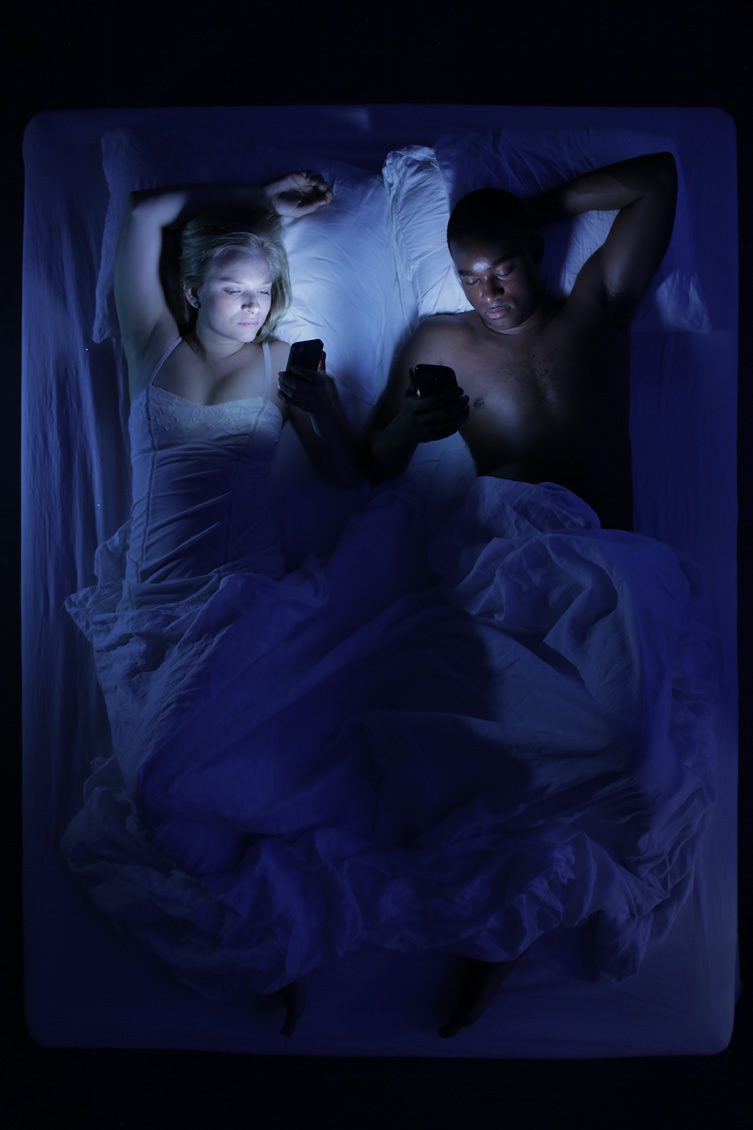
Helen and Travis, 2014
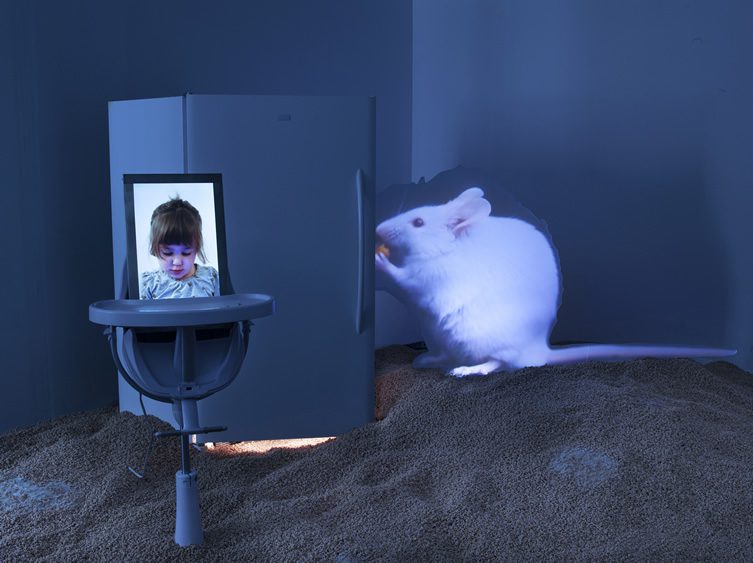
In Loco Parentis, 2014,
Installation with rear projection video, HD video, acrylic,
Cheerios, refrigerator, high chair, metal, diamond dust,
Dimensions Variable, Installation View
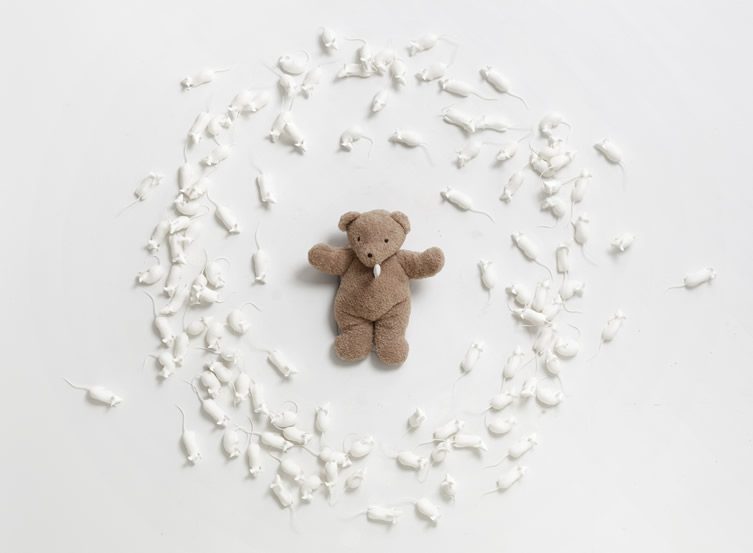
Poor Teddy, 2014,
Nylon, oil, teddy bear, knife, silicone,
Dimensions variable
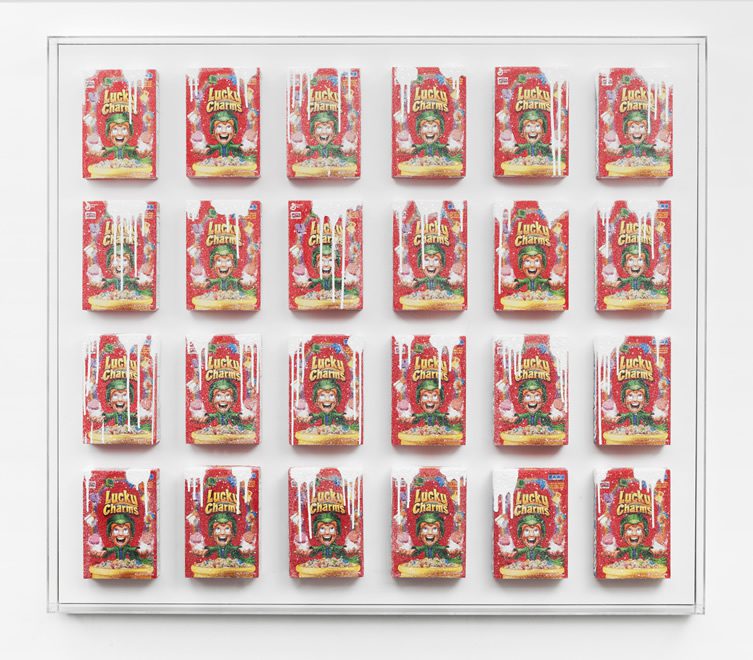
Magically Delicious, 2014,
Cereal boxes, acrylic, crushed glass, wood,
67.5 x 59 x 4.5 in.
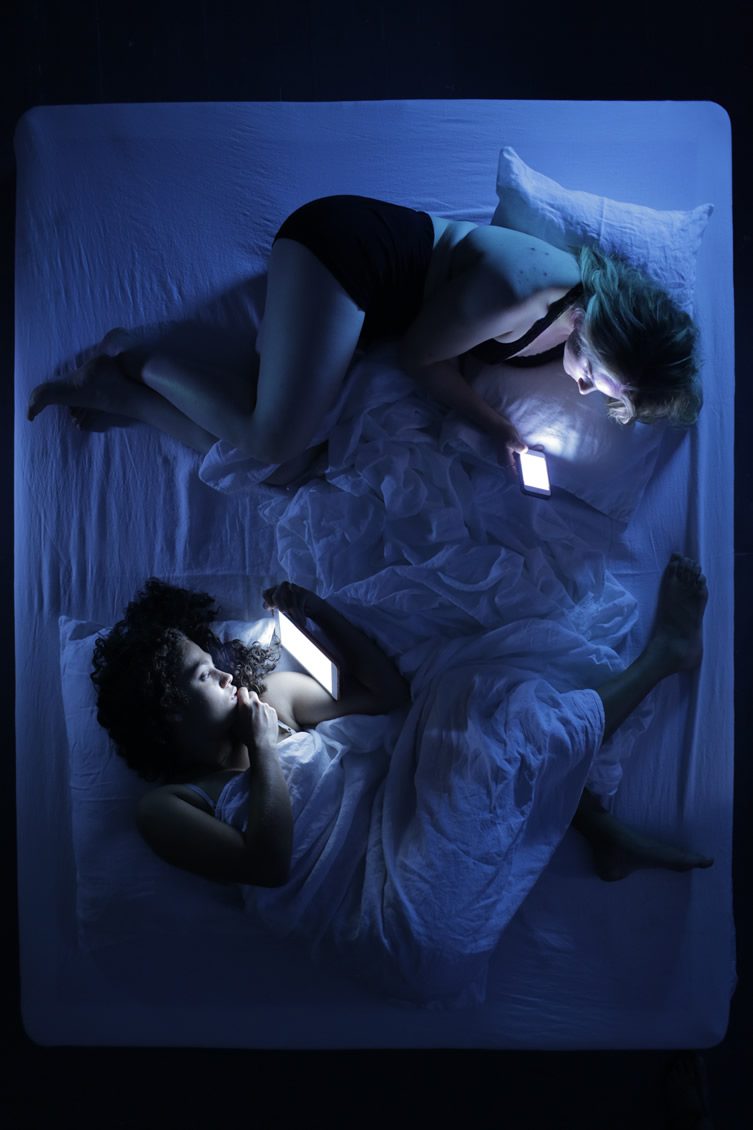
Zoe and Susie, 2014








